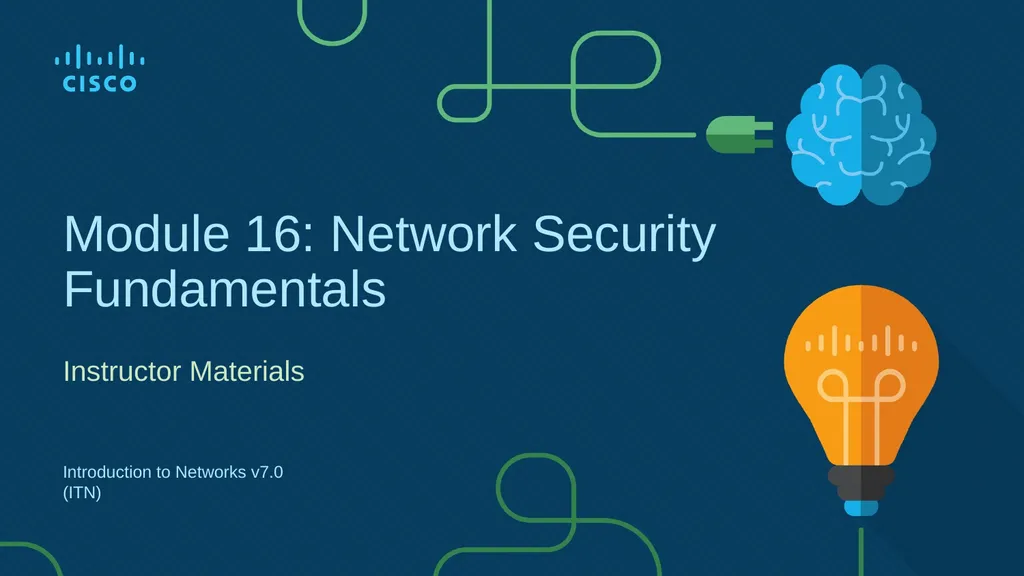Module 16: Network Security Fundamentals
Author : mitsue-stanley | Published Date : 2025-05-14
Description: Module 16 Network Security Fundamentals Instructor Materials Introduction to Networks v70 ITN Module 16 Network Security Fundamentals Introduction to Networks v70 ITN Module Objectives Module Title Network Security Fundamentals
Presentation Embed Code
Download Presentation
Download
Presentation The PPT/PDF document
"Module 16: Network Security Fundamentals" is the property of its rightful owner.
Permission is granted to download and print the materials on this website for personal, non-commercial use only,
and to display it on your personal computer provided you do not modify the materials and that you retain all
copyright notices contained in the materials. By downloading content from our website, you accept the terms of
this agreement.
Transcript:Module 16: Network Security Fundamentals:
Module 16: Network Security Fundamentals Instructor Materials Introduction to Networks v7.0 (ITN) Module 16: Network Security Fundamentals Introduction to Networks v7.0 (ITN) Module Objectives Module Title: Network Security Fundamentals Module Objective: Configure switches and routers with device hardening features to enhance security. 16.1 Security Threats and Vulnerabilities Security Threats and Vulnerabilities Types of Threats Attacks on a network can be devastating and can result in a loss of time and money due to damage, or theft of important information or assets. Intruders can gain access to a network through software vulnerabilities, hardware attacks, or through guessing someone's username and password. Intruders who gain access by modifying software or exploiting software vulnerabilities are called threat actors. After the threat actor gains access to the network, four types of threats may arise: Information Theft Data Loss and manipulation Identity Theft Disruption of Service Security Threats and Vulnerabilities Types of Vulnerabilities Vulnerability is the degree of weakness in a network or a device. Some degree of vulnerability is inherent in routers, switches, desktops, servers, and even security devices. Typically, the network devices under attack are the endpoints, such as servers and desktop computers. There are three primary vulnerabilities or weaknesses: Technological Vulnerabilities might include TCP/IP Protocol weaknesses, Operating System Weaknesses, and Network Equipment weaknesses. Configuration Vulnerabilities might include unsecured user accounts, system accounts with easily guessed passwords, misconfigured internet services, unsecure default settings, and misconfigured network equipment. Security Policy Vulnerabilities might include lack of a written security policy, politics, lack of authentication continuity, logical access controls not applied, software and hardware installation and changes not following policy, and a nonexistent disaster recovery plan. All three of these sources of vulnerabilities can leave a network or device open to various attacks, including malicious code attacks and network attacks. Security Threats and Vulnerabilities Physical Security If network resources can be physically compromised, a threat actor can deny the use of network resources. The four classes of physical threats are as follows: Hardware threats - This includes physical damage to servers, routers, switches, cabling plant, and workstations. Environmental threats - This includes temperature extremes (too hot or too cold) or humidity extremes (too wet or too dry). Electrical threats - This includes voltage spikes, insufficient supply voltage (brownouts), unconditioned power (noise), and total power loss. Maintenance threats - This includes poor handling of key electrical components (electrostatic discharge), lack of critical spare parts, poor cabling, and














